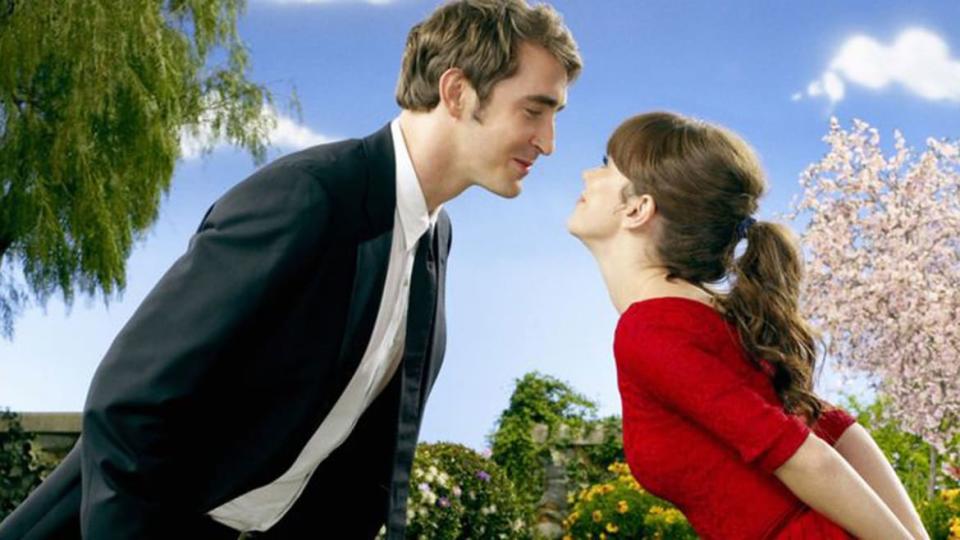There’s Finally a Perfect Pandemic TV Show—But It’s 14 Years Old

This is a preview of our pop culture newsletter The Daily Beast’s Obsessed, written by senior entertainment reporter Kevin Fallon. To receive the full newsletter in your inbox each week, sign up for it here.
‘Pushing Daisies’ Is Finally Back From the Dead
We are closing in on the one-year anniversary of the last time I went into an office for work. I remember scoffing at the inconvenience but looking forward to working from home for a change of pace, [whispers this part] thinking it was maybe a bit of an overreaction, and stocking up on frozen pizzas like I was hunkering down for a snow day and this was all going to be just a few-weeks-long ordeal.
In those 11 months, I have watched a lot of television. We all have watched a lot of television. So. Much. Television. Some of it good. Some of it bad, but distracting enough. Some of it Emily in Paris. (Now a Golden Globe nominee, should you have been deluded into thinking that 2021 would not continue to exist in last year’s upside-down-and-backwards surreality.)
Eventually COVID-19 entered the picture, with series that were either conceived during and in direct response to the pandemic or shows that decided to incorporate the new normal into their plots.
As a general rule, they were terrible. Really bad! That is important context for the following revelation: I have found it. I have discovered the perfect pandemic TV show and, starting this week, you can watch it, too.
It just so happens that this TV show is about 14 years old.
Pushing Daisies debuted on HBO Max this week, where you can watch its two tragically short—but now blessedly bingeable—seasons.
The visionary series ran from 2007 to 2009 to extreme critical acclaim. But it was one of the victims of the WGA strike shutdown, which effectively killed buzz and ratings for the show during the long stretch between its Emmy-nominated, shortened first season and its eventual return after a year-long hiatus. (Back in pre-streaming broadcast TV days, that was a really long time.)
Is there a pandemic in Pushing Daisies? God no, thankfully. But that’s strangely makes it even more resonant.
The series centers on Ned, played by Lee Pace, a pie shop owner whose side hustle is bringing back people from the dead—for no more than 60 seconds—so he can ask them who killed them and then collect the reward money. (There’s a balance between the whimsical and the macabre that the show manages to strike that allows you to harbor an almost unbearable crush on Ned despite this one biographical detail that would otherwise render him a sociopath.)
You see, Ned has a gift, or a curse, depending on your perspective. He has the power to resuscitate the dead, as mentioned, by touching the corpse. If he touches them again, they revert to death. But if he keeps them alive for longer than 60 seconds, another person in their vicinity dies in their stead.
If well-managed, which Ned is meticulous about, it can be a useful tool in endeavors like avant-garde murder-solving. But it also drives him to a life of retreating from intimate human touch and connection, for fear that the worst might befall a loved one and he’d be ethically compromised about what to do. That is exactly what happens when his long-lost childhood best friend and first love dies and he arrives to solve her murder. Only this time, he can’t bring himself to let her revert back to death. He keeps her alive.
Now Ned and Chuck, played by Anna Friel, are in a rough spot. She’s enamored by the gift he gave her: life again. He’s in love with her. But they can’t touch, or she’ll die. So how do you navigate a relationship when physical closeness is deadly? How does that manifest in extreme loneliness, and, more, how do you grapple with that loneliness and attempt to manufacture fleeting bright spots of happiness where you can, in spite of impossible circumstances?
Do I have to spell out for you how this is all so timely for today?
Rewatching the first few episodes this week, it struck me that the reason it seems so immediate today is that, outside of the obvious parallels, it’s still escapist. Creator Bryan Fuller imagined a world of lush CGI landscapes, curious and comedic camera angles, Scooby Doo-like whodunit diversions, fairytale sets, and Kristin Chenoweth occasionally breaking into song. (Chenoweth won an Emmy for her performance, and it still ranks among the most deserving “they actually got it right” Emmy wins in the last 20 years.)
There’s something somber, dark, and melancholy about the show, but it’s also fanciful, eccentric, and visually romantic. It allows you to access the feelings of dread, isolation, and longing that we’re all grappling with now, but still retreat to a fantasy world where you’re not suffocated by them.
I remember watching the series when I was in college—like Doogie Howser, I was in college by the age of six, obviously—and just swooning over it: the sweet relationship between Ned and Chuck, the playful aesthetic, the Chenoweth songs, and the 6’5” hulking frame of Lee Pace in a tight black shirt being incredibly cute while baking pies. I wished it would run forever and was devastated when it was canceled. But I’m grateful that it’s available again and people can visit it anew.
It just gets the vibe of today. A little lonely, a little wistful, a little confused and anxious, and a lot of desire to be surrounded by copious—endless, if possible—amounts of pie.
Get our top stories in your inbox every day. Sign up now!
Daily Beast Membership: Beast Inside goes deeper on the stories that matter to you. Learn more.

 money
money 